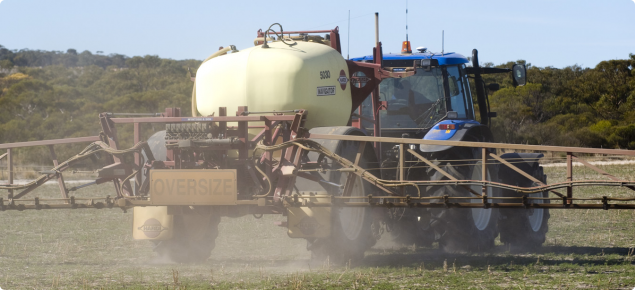Weed competition can be affected by crop species, crop variety, weed species, crop and weed density and time of emergence of the crop relative to the weed.
Oats are more competitive with weeds than barley, wheat, canola and pulses when sown at recommended seeding rates because of its greater tillering ability. If given the right start, an oat crop has the necessary vigour to compete against weeds. Increasing crop density may improve competitiveness and ultimately impact on yield.
Cutting hay is a common method used for reducing the weed seed bank - it is important to actually cut hay as per the rotation as harvesting grain instead can result in huge weed increases the following season. But effective weed management for hay crops is also essential as weed contamination is directly related to quality. Weeds can cause downgrading or rejection of export hay as there is a weed contamination limit of 5 per cent. There is also a nil tolerance to annual ryegrass toxicity (ARGT) and prickly weeds such as doublegee.
Integrated weed management (IWM)
Preventing weeds from entering or establishing in a paddock is the best method of weed management, especially when combined with physical, agronomic and chemical options. Some of the non-chemical options available in IWM are:
- use of weed-free seed
- clean machinery when moving between paddocks and on farms
- tarp loads when moving grain
- control weeds along roadsides at the edge of paddocks
- eradicate small patches of new invading weeds
- consider weeds when importing hay
- don't import grain or products that may contain certain herbicide resistant weed seeds
- crop and pasture rotations using species with different competitive abilities, sowing dates and harvesting techniques such as swathing
- increase seeding rates to maximise crop-weed competition and yield without reducing grain size
- sow cereals in an east-west direction
- implement a tickle cultivation to stimulate germination of ryegrass and other weeds prior to seeding
- grazing with sheep or cattle.
Herbicides
There is a wide range of herbicides registered for the control of broadleaf and grass weeds. These include herbicides that are applied:
- pre-emergence
- early post-emergence
- late post-emergence.
Current herbicide recommendations should be referred to before spraying.
Varieties may differ in their reaction to the registered herbicide options for oats. Varieties are assessed for herbicide tolerance as part of the National Herbicide Tolerance project supported by Grains Research and Development Corporation. The level of tolerance will vary with the rate of herbicide, the environmental conditions when the herbicide is active in the crop, and for some herbicides, the stage of growth.
For current information on variety herbicide tolerance see the National Variety Trials website.
Reducing glyphosate resistance
Glyphosate is a key herbicide in our farming systems and responsible use is required to prolong its effective life.
IWM should be applied by growers to sustain glyphosate and reduce the incidence of resistance in weeds, particularly ryegrass.
A double knockdown technique will minimise the risk of resistance developing. Double knockdown is the sequential use of glyphosate followed by a mixture of paraquat + diquat.
Best practices for double knockdown include:
- Glyphosate followed by paraquat + diquat. This sequence provides better ryegrass, capeweed and radish control than the reverse.
- Spraying the first herbicide at the 3-6 leaf stage of ryegrass results in the best control.
- The interval between knockdowns needs to be at least one day when using the glyphosate followed by paraquat +diquat but a 2-10 day interval is more effective if seasonal conditions permit.
- Allowing a longer interval before the second spray will ensure plants emerging after the first knockdown are killed.

